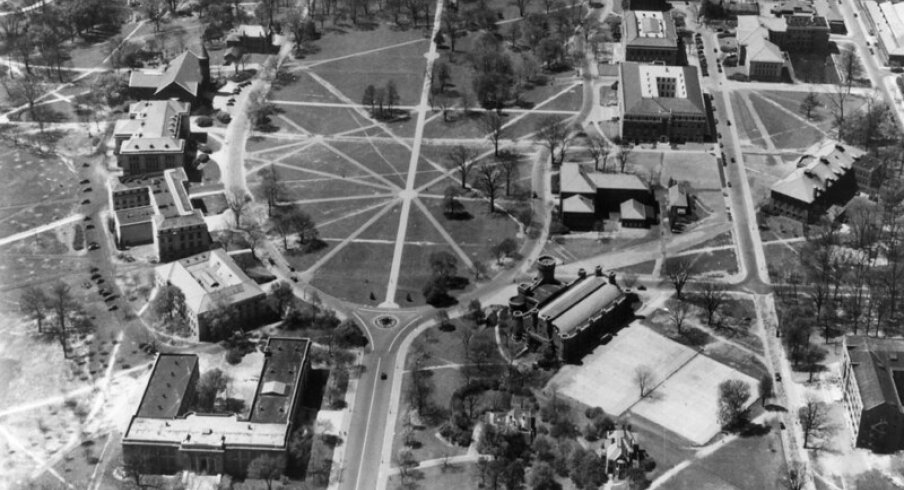Time and Change is a weekly series highlighting the history of some of Ohio State's storied traditions.
THEN
In 1892, work began on an integrated tunnel system between Orton and Hayes Hall that would provide central heating, power, and water for the buildings. The initial goal of the system was to transfer utilities between buildings instead of boiler rooms in each, thus saving money.
The earliest tunnels were made up of bricks that were produced by prisoners at the Ohio State Brick Plant.
As Ohio State’s campus grew, so did the tunnels. The tunnel system expanded to 16,058 feet in 1925 and serviced all of the main campus buildings. In keeping the services underground, it allowed for easy access to maintain the utilities and also eliminated the need for visible power lines on campus.
The McCracken Power Plant was built in 1926 and was the new main power source for most campus buildings through the tunnel system.
The university tried to keep the expansive system a secret from students in the 60’s and 70’s over fears that students participating in the riots would enter and damage the tunnels.
As much as the university tried to keep it a secret, a fair share of students made trips down into the tunnels and were charged with trespassing. Rumor has it, students frequented the tunnels to walk in between buildings or to just hang out.
The tunnels lie underneath campus and span eight miles covering areas from McCracken Power Plant to Sullivant Hall and along Neil Avenue to the Medical Center. They house major utilities such as phone lines, power lines, gas, hot water, and steam.
Even with how cold it is outside, snow and ice will not stick to the sidewalks above the tunnels, as temperatures inside of the tunnels can reach up to 160 degrees.
NOW
The more modern tunnels are mostly made of concrete, as opposed to brick, and are wider which allows for maintenance personnel to travel through them easily. As technology has advanced, the tunnels now house fiber-optic cables to service the wireless needs on campus.
In 2018, Ohio State completed a restoration project on the utility lines in some of the oldest tunnels on campus. Even though Ohio State was not secretive about the construction being done on the tunnels, rumors have spread over what the tunnels were actually used for.
Students used to be able to take a tour of tunnels during the “Things You Never Got to See Tour” during Commencement week, but more recently they’ve become a campus mystery.
If you're interested in more history and pictures of the tunnels, The Ohio State University Archives curated a file which can be found here.


